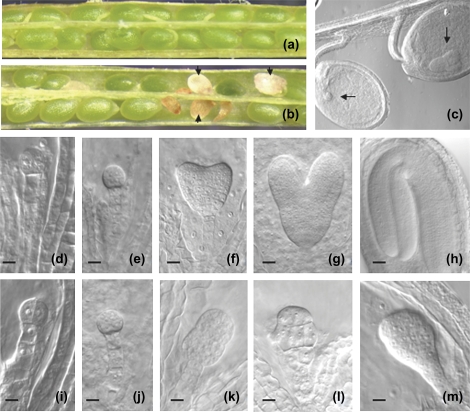Fig. 6.
Mutant tro-1 embryos were arrested before the globular stage. (a) Wild-type silique showing a full seed set and a (b) heterozygous tro-1 silique with approximately 25% of the embryos aborted (black arrows). (c) Whole-mounted, cleared seeds from siliques of heterozygous tro-1 plants. The same silique contains a mutant embryo arrested at the early globular stage (left) compared with a normal embryo developed at the heart stage (right). (d–h) Nomarski images of wild-type embryos at the four-cell stage (d), eight-cell stage (e), early heart stage (f), heart stage (g), and torpedo (h). (i–m) Nomarski images of homozygous tro-1 embryos arrested within the same siliques as the wild-type embryos showed in (d–h). Mutant embryo with normal appearance at four-cell stage (i) and eight-cell stage (j). (k–m) Embryos with abnormal morphology compared with sibling embryos shown in (f–h), respectively. Scale bar: d–f and i–m, 20 μm; g, 25 μm; h, 40 μm.

